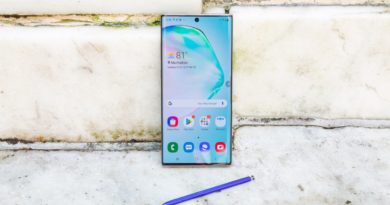Best international phone plans — what travelers need to know
![]()
Not that many of us are doing a lot of traveling these days — overseas or otherwise — but when you do start moving around the globe again, you’re going to want to make sure one of the best international phone plans travels with you. A phone plan that gives you access to data around the globe can be worth its weight in gold, helping you stay connected even when you’re far from home.
Does your current cell phone plan let make calls or browse the web once you leave U.S. borders? (Usually, though there can be a fee on top of your currently monthly bill depending who your carrier is.) And what exactly will your carrier charge you? (It depends on where you’re traveling.) All of these are things for globetrotters to consider when shopping for the best cell phone plan.
The next time you depart on an overseas adventure — whenever that may be — you should know exactly which services the best phone carriers provide when you’re out of the country. Here’s a look at the travel policies and perks for the three top U.S carriers along with information on Google Fi, which offers a plan that definitely appeals to frequent travelers.
Here are the best international phone plans that can serve as a valuable travel companion whenever you’re on the road.
Have the right phone
First things first: The only phones you’ll be able to use when you travel internationally are those considered “world phones,” meaning those that can be used as easily abroad as they are domestically. That means the phone must be capable of running on a GSM network, as that’s the predominant networking standard around the world. Pretty much any handset sold unlocked or SIM-free is designed to be used on global GSM networks, making them good options for travelers.
That said, if you’re on a CDMA network (Sprint or Verizon) here in the states, don’t despair: Many of the best best phones these days can support both bands, thus simplifying travel. That includes popular models like the iPhone 11 and the Samsung Galaxy S20. You can always check with your carrier before your trip to make sure your phone will work overseas.

T-Mobile
T-Mobile offers one of the simplest solutions for traveling overseas. If you subscribe to theT-Mobile’s Magenta Plan or are clinging to one of its discontinued Simple Choice plans with tiered data, you automatically get unlimited data and texting in more than 210 countries around the world. If you want to place or receive calls, you’ll be subject to the local rate depending on where you want to go. You don’t need to notify T-Mobile of your travel.
It’s also worth noting that although you’ll get unlimited data when traveling with a Magenta plan, you’re capped at an exceedingly slow 128 kbps, or 2G. Most 4G connections can deliver average speeds of 3Mbps to 6Mbps. Upgrading to T-Mobile Magenta Plus doubles your data speeds when you’re overseas, while also giving you unlimited in-flight Wi-Fi on planes that use Gogo’s service. That costs an extra $15 a month, though the price is reduced to $10 a month per line for subscribers with multiple lines.
In Mexico and Canada, T-Mobile used to allow unlimited 4G LTE coverage with its One plan, but you’re now capped at 5GB with speeds slowed to 2G after that.
T-Mobile’s travel benefits are also included in its senior plan, which offers two lines of data for $70 total for subscribers 55 years and older. (Seniors who want double the data speed when traveling abroad can opt for the Magenta Plus Unlimited 55 plan, which costs $90 a month for two lines.) If you opt for T-Mobile’s lower cost Essentials unlimited plan, you’ll get 2G roaming in Canada and Mexico, but have to pay for data elsewhere.
T-Mobile also offers International Pass options for travelers who want high-speed data during lengthier stays overseas. A 5GB International Pass gives you that much high-speed data along with unlimited calling for 10 days. It costs $35. T-Mobile’s $50 International Pass increases high-speed data to 15GB and extends the length of the pass to 30 days. The carrier also offers a $5 daily pass that gives you 512MB of high-speed data, and unlimited calling between the 210 Simple Global destinations.
Pricing on cruises will vary according to which cruise you’re taking. You can check T-Mobile’s site to see what your pricing will be.
T-Mobile has fully absorbed Sprint into its operations, with existing Sprint customers able to keep their plans; presumably that applies to overseas travel as well, which means free unlimited texting and data at 2G speeds if the free Sprint Global Roaming is a part of your plan. To get new customers to join its wireless service, T-Mobile is offering four lines of unlimited data for $100 a month for a limited time, but that plan lacks the overseas benefits of T-Mobile Magenta: all you get is unlimited texting when you’re overseas.

Verizon
Although Verizon’s network is based on CDMA — a technology that most of the world doesn’t support — the carrier offers coverage to its customers all over the world. But where you travel significantly influences how much you’ll have to pay.
Verizon just tweaked the perks on its unlimited plans, but there’s no impact on international benefits. All four of Verizon’s current unlimited data plans include the ability to text internationally to 200-plus countries, and you can also use LTE data when traveling in Mexico and Canada. You’re limited to 0.5GB of data consumption per day in those two countries before your speeds are slowed to 2G, and you can’t use more than half of your talk, text and data over a 60-day period.
For other travel, Verizon offers a daily option called TravelPass. It’ll cost you $5 per day per device for each day you’re out of the country if you travel to Mexico or Canada and don’t have an unlimited plan. In 185 other countries — including China, France and Germany — Verizon charges $10 per device per day. Talk, text and data on TravelPass are subject to the same allowances you have on your Verizon plan stateside; in other words, the data you use in Europe draws from the tiered data plan you have at home. Note that data speeds are only 4G for the first 512MB each day when you have a TravelPass; after that, you’ll be throttled to 2G speeds. (Verizon will also let you buy another 500MB of high-speed data, but you’ll pay another $5 or $10 depending on where you’r traveling.)
If you know you’ll be traveling for a bit more time, consider Verizon’s monthly options. Again, pricing and service will vary depending on where you go. Monthly passes start at $70 for 100 minutes of talk, 100 texts sent and 0.5GB of data. If you want to bump up those limits, $130 gets you 250 minutes of talk, 1,000 texts sent and 2GB of data. You designate the day Verizon’s monthly international plan starts — generally, the moment you set foot in the new country — and your pass runs for the next 30 days, expiring automatically. A Tom’s Guide editor spent 10 days in France last year using Verizon’s $70 monthly pass, and had more than enough data for his trip.
Verizon also offers pay-as-you-go pricing for international travel. You’ll pay 99 cents per minute in Canada and Mexico, Guam and the Northern Marianas Islands. Rates go up to $1.79 in 130-plus countries and $2.99 in 80 other places. Each text message you send will cost you 50 cents, and each received text will set you back 5 cents. Your data will be charged at a rate of $2.05 per megabyte no matter where you are.
Going on a cruise? Verizon charges $2.99 per minute for voice and 50 cents for every sent text message. You’ll pay 5 cents per message received.

AT&T
AT&T also comes with varied international pricing depending on where you want to go. If you’re heading to Mexico or Canada, for instance, AT&T already covers all of your voice, data and text with its three different unlimited plans — Starter, Extra and Elite. If you’ve opted for tiered data through AT&T’s Mobile Share Plus plans, you can use talk, text and data in Mexico.
If you’re off to Europe, the Caribbean, Latin America or the Asia Pacific region on a short jaunt, AT&T recommends its $10-a-day International Day Pass, which comes with unlimited talk and text and data governed by your plan. (Note that each device you take overseas will need its own Day Pass.) That service is available in 200-plus countries, and you can add a second phone for just $5 a day.
For longer trips, AT&T Passport provides 30 days of service when you travel. If you thought previous versions Passport offered too little data, you’ll be please with the plan now. The $70 Passport gives you 2GB of data and unlimited texting; you’ll be charged 35 cents per minute for calls to any country. A $140 AT&T Passport boosts your data to 6GB. Don’t go over that allotment, as AT&T charges $30 for each GB you go over.
And, of course, AT&T delivers an à la carte service, with a talk rate of $1 per minute in Canada and Mexico, $2 per minute in Europe and $3 per minute anywhere else in the world. AT&T charges 50 cents for each text message and $1.30 for each picture or video message. You’ll pay $2.05 per megabyte of data usage.
On cruises, AT&T offers a $50 monthly plan that covers 50 minutes of talk and unlimited texting. A $100 monthly plan gives you 200MB of LTE data on top of unlimited talk and text. If you’d prefer to pay as you go on your cruise, calls are $3 per minute and data will run you $6.14 per megabyte.

Google Fi
If you do a lot of international traveling, don’t ignore Google Fi, the wireless service set up by Google that uses cellular towers of Sprint, T-Mobile and US Cellular to provide coverage. International travel is built into Google Fi’s rate plans, which cost $20 a month for talk and text plus $10 for each GB of data you use. (Data usage is rounded off to the nearest megabyte so you only pay for the data you consume.) Google stops charging you after you use 6GB a month, meaning you’ll never pay more than $80. If you find unlimited data plans more appealing, Google has you covered there, too — it also offers a $70 option that rolls in unlimited talk, text and data.
Travel to 200-plus countries, and Google Fi charges the same rate for data usage, whether you’re on an unlimited data plan or paying by the gigabyte. Voice calls cost 20 cents (though calls placed over Wi-Fi are free) and you get unlimited SMS messaging.
Google Fi is even more appealing now that Google has opened up service to all phones, including iPhones. Note that phones optimized for Google Fi — Google’s Pixel phones, including the new Pixel 4a, plus the Moto G Power and Moto G Stylus — can switch seamlessly between cellular networks and Google’s Wi-Fi hotspots, while other phones cannot.
Best international phone plans: Which should you pick?
If you make frequent trips overseas, T-Mobile’s plan is a no-brainer. The carrier includes unlimited data and texting as part of its standard Magenta unlimited plan, albeit at slower speeds than you’re used to in the states. Upgrading to Magenta Plus doubles those speeds.
While T-Mobile’s coverage is the most appealing among the established carriers, Google Fi shouldn’t be overlooked if you’re willing to go beyond the Big Four wireless carriers for your coverage. Like T-Mobile, you simply use the plan you’re already paying of overseas, only here the speeds are faster.
You’ll need to pay extra for Verizon and AT&T coverage when you travel beyond Mexico and Canada. Customers of those carriers should examine day vs. month passes to figure out which one offers the better value for their needs.


